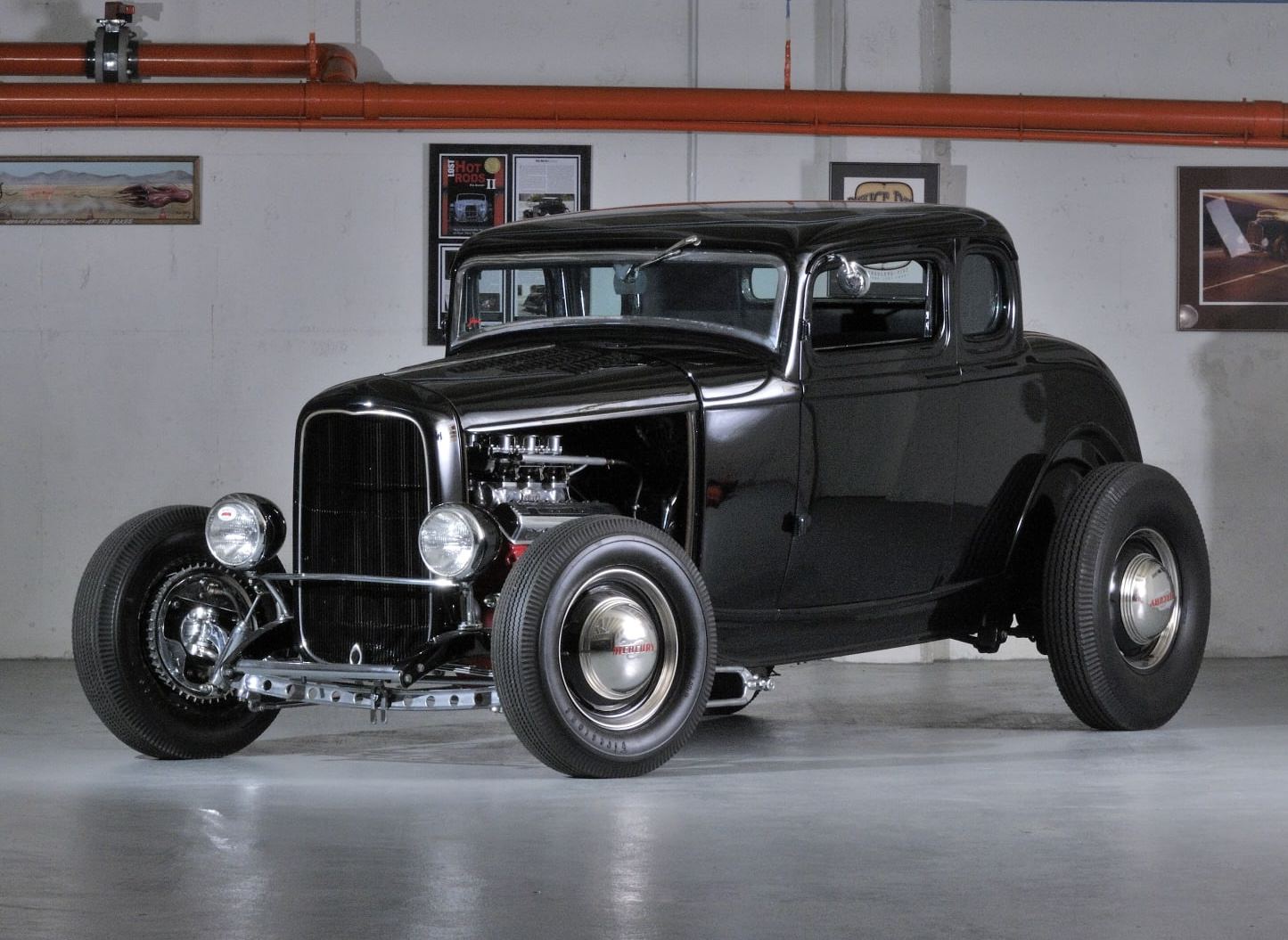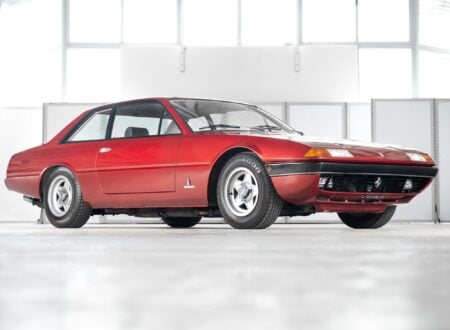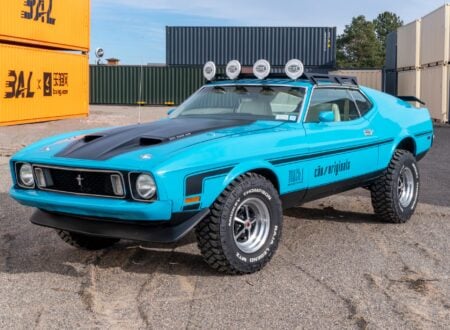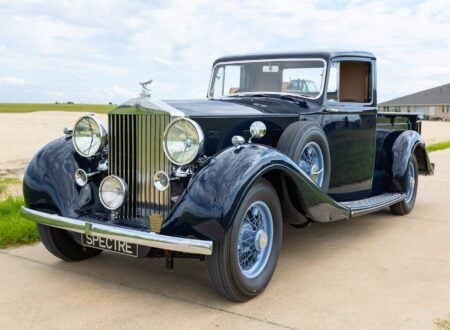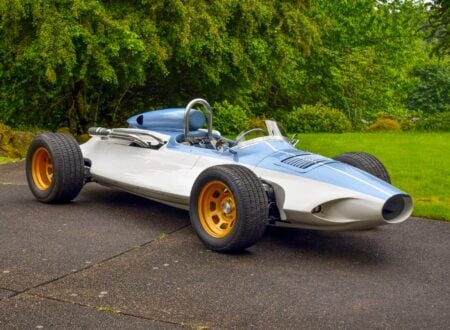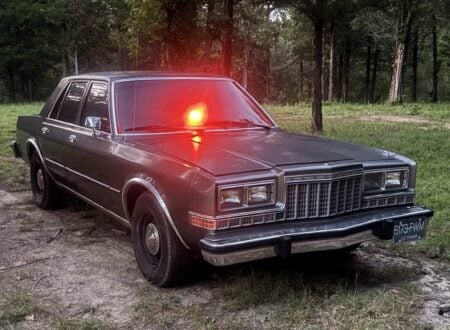This is a 1932 Ford Hot Rod that was originally known as “Hart’s Automotive Coupe” when it was first built in the 1950s. It was raced in-period at Santa Ana, San Gabriel, Fontana, Riverside, Irwindale, and Lions.
The car was later bought by one of America’s great racing drivers, Jim Busby, who rebuilt the car to the specification you see here today. Jim famously won his class in the 1982 24 Hours of Le Mans driving a Porsche 924 Carrera GTR on street tires – beating his rivals who were all on full racing slicks.
Fast Facts – The 1932 Ford “Jim Busby” Hot Rod
- This 1932 Ford Hot Rod, originally known as “Hart’s Automotive Coupe,” was a 1950s hot rod racer that competed at tracks like Santa Ana and Riverside, achieving 138.46 mph in the A/Altered class and featuring in Drag News magazine in March 1959.
- Renowned racer Jim Busby later acquired and rebuilt the car. Busby, celebrated for winning his class in the 1982 Le Mans in a Porsche 924 Carrera GTR on street tires, is a skilled driver and engineer who modified cars like this at his Laguna Beach workshop.
- This hot rod is powered by a 335-cubic-inch 1955 Cadillac V8 with six 97 carburetors and custom headers, it has a Hydra-Matic transmission, and a boxed original 1932 Ford frame. The roof is chopped, and the car is finished in black with a black and red tuck-and-roll interior.
- It’s scheduled to be auctioned by Mecum in mid-January, the vehicle is expected to fetch upwards of $75,000 USD. It represents a blend of racing history, craftsmanship, and Busby’s legacy.
The Arrival Of The Hot Rod
The first hot rods began appearing in the 1930s but it would be after WWII, from 1945 onwards, that the hot rod craze would really kick into high gear thanks to the two million American GIs that returned from the European and Pacific theaters of war.
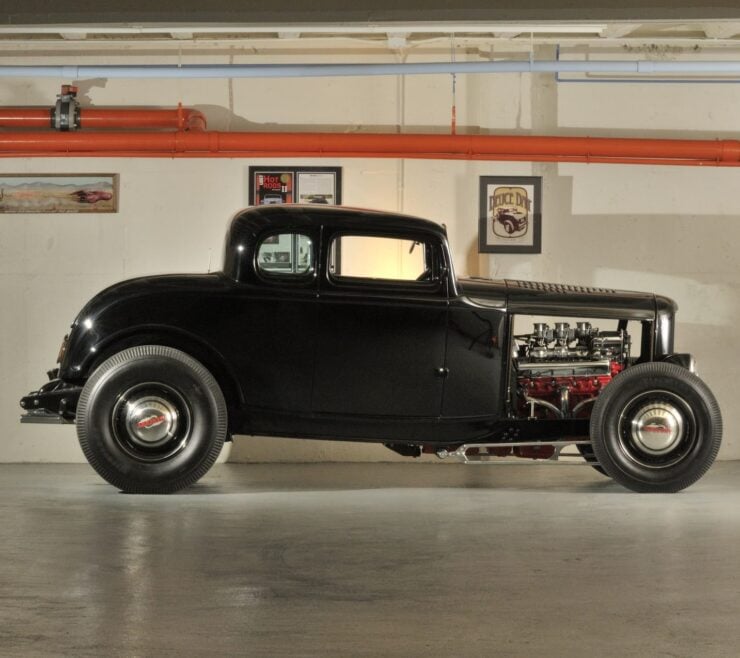

By this time, the 1932 Ford V8 was an affordable secondhand car that was 13+ years old, and it offered better performance out of the box than anything else on the used car salesman’s lot in its price range.
The cheapest way to improve performance is by reducing weight, and this is what many owners did, resulting in that cutdown hot rod look that became a signature look.
Other ways of increasing performance were largely the same then as now, add a hot cam, higher compression pistons, increase displacement, add larger valves, and maybe a little forced induction.
Interestingly, higher performance cams or “hot cams” were commonly called “hot rods” due to their shape – and many think this is where the name hot rod as a descriptive term for the entire genre of modified cars came from.
These hot rods were raced by their owners, often down 1/4 mile stretches of asphalt on the outskirts of town, and this would lead to the establishment of the modern motorsport genre of drag racing.
The Life And Times Of Jim Busby
“Every time I won a race, Peter personally had to write me a $5,000 bonus check. I often had to call him on Monday morning after knocking him off the road the day before to ensure I got my bonus. He would grumble and curse, and I’d say: did you hire me to place second or to win? And he’d say: I hired you to win, but you don’t have to race me so hard. You’re going to get a reputation. I said: good.” – Jim Busby
Above Video: Despite the modern thumbnail, this is a vintage documentary about Jim Busby and his remarkable feat of taking a class win at the 1982 24 Hours of Le Mans driving a Porsche 924 Carrera GTR on street tires.
Jim Busby is a larger-than-life character who had a natural ability both on the race track as a driver, and in the workshop as an engineer. This gave him an edge over other drivers, as he had a deep understanding of every aspect of the car and could improve his cars accordingly.
He had grown up as a Southern Californian hot rodder, racing cars he built himself down empty sections of Huntington Drive fender to fender with countless other young men who were doing the same.
Jim’s talent saw him defy the odds, and end up racing for Porsche at one of the most prestigious races in the world – the 24 Hours of Le Mans.
Over the course of his long career, Jim would race hot rods, dragsters, Porsches (both 934s and 935s), and streamliner land speed racers at the Bonneville Salt Flats. Almost every car he raced was built or modified at his now-famous Laguna Beach workshop in California.
One of the cars that was on the receiving end of his wrenching is the 1932 Ford Hot Rod shown in this article, a car we talk about in far more detail below.
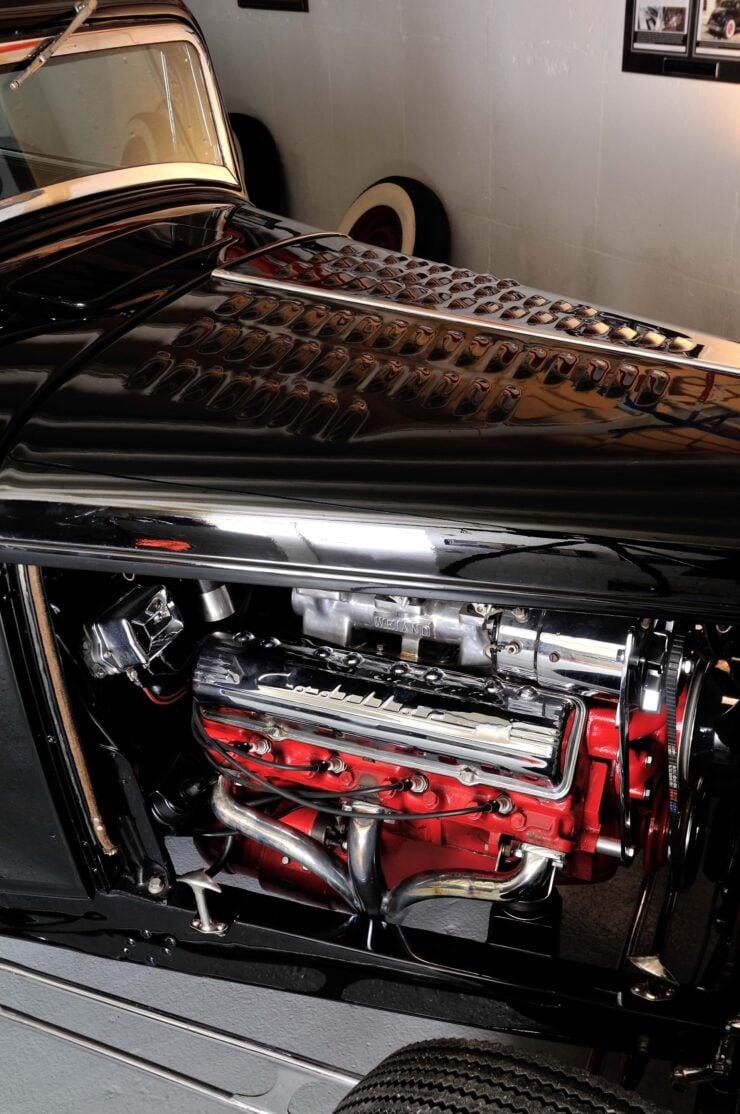

The 1932 Ford “Jim Busby” Hot Rod
This car was built in the 1950s as one of the original hot rods, built for racing rather than static display at car shows, as they arguably should be. Originally named “Hart’s Automotive Coupe,” this car was raced in the 1950s on the asphalt at Santa Ana, San Gabriel, Fontana, Riverside, Irwindale, and Lions.
This car ran 138.46 mph in the A/Altered class in-period, and it was featured in the Drag News magazine in March of 1959 as part of a three-photo feature.
The roof was chopped 5 inches in the front and 4.25 inches in the rear and the car was given a two-piece hood with 72 louvers, peaked grille shell, and shaved deck and door handles.
Power is provided by a 335 cubic inch 1955 Cadillac V8 bored .030 over and fitted with a Chet Herbert race cam and solid lifters, McGurk adjustable rocker arms, a Weiand intake with six 97 carburetors with Scott flared racing-style tops, ported and polished cylinder heads, triple chrome valve covers modified to fit the high-lift rockers, and the crankshaft was micro-polished and reground to standard size.
The engine is fitted with triple chrome valve covers modified to fit the high-lift rockers, a chromed Belond three-into-one headers with Smithy glass-pack mufflers, and a B&M “Shur-Shift” Hydra-Matic transmission.
The car uses a 1940 Ford column-shifter assembly, a 1957 Ford 9-inch rear end with parallel leaf springs and ladder bars, modified Ford F1 front shock absorber mounts, a Model A front cross-member, a square-tube center X-member, a dropped and drilled beam axle, and finned 1958 Buick brake drums with 1946 Ford hydraulic brakes.
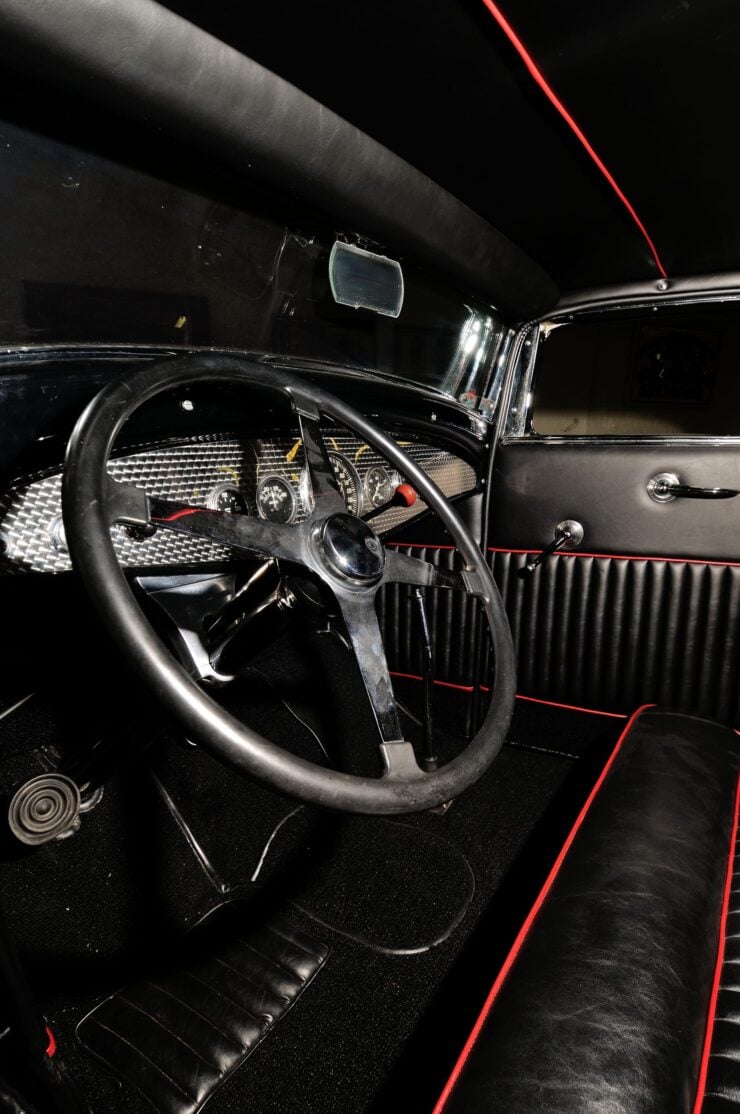

The vehicle was built on a boxed original 1932 Ford frame, not a modern recreation. The car is finished in Black Mercedes-Benz acrylic enamel with a Black tuck-and-roll Naugahyde interior with Red piping.
It’s now due to roll across the auction block with Mecum in mid-January with a price guide starting at $75,000 USD. If you’d like to read more about it or register to bid you can visit the listing here.
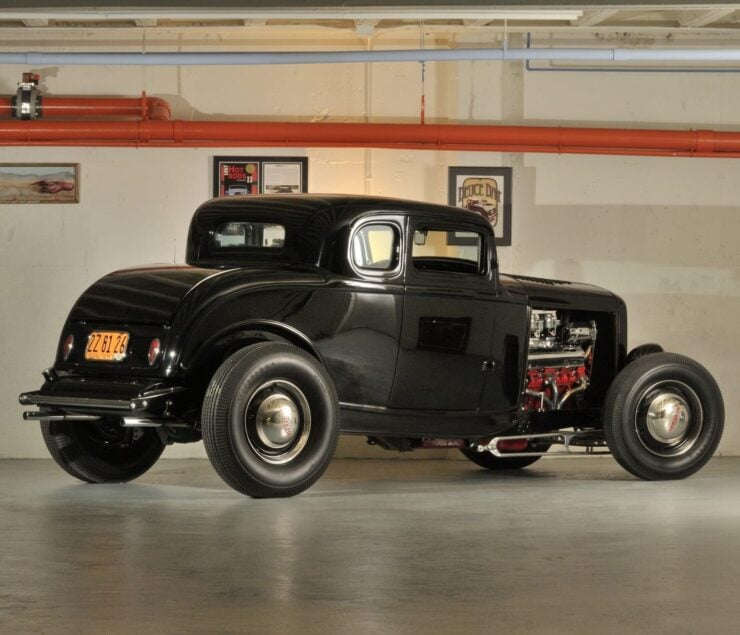
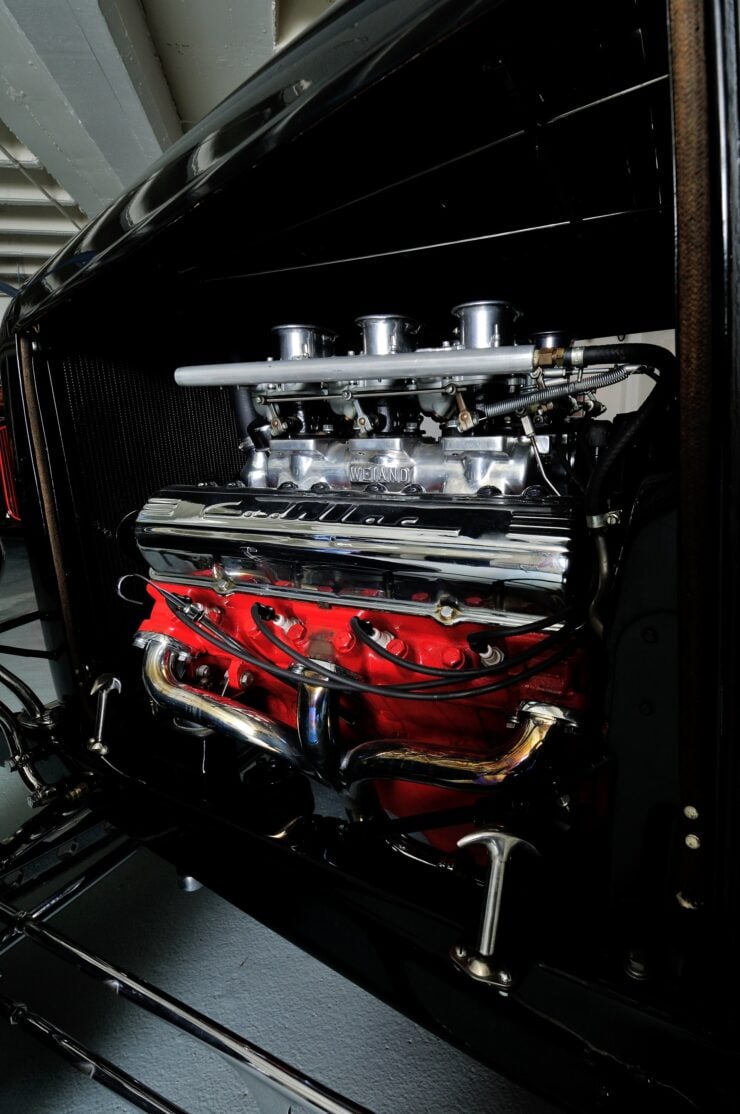
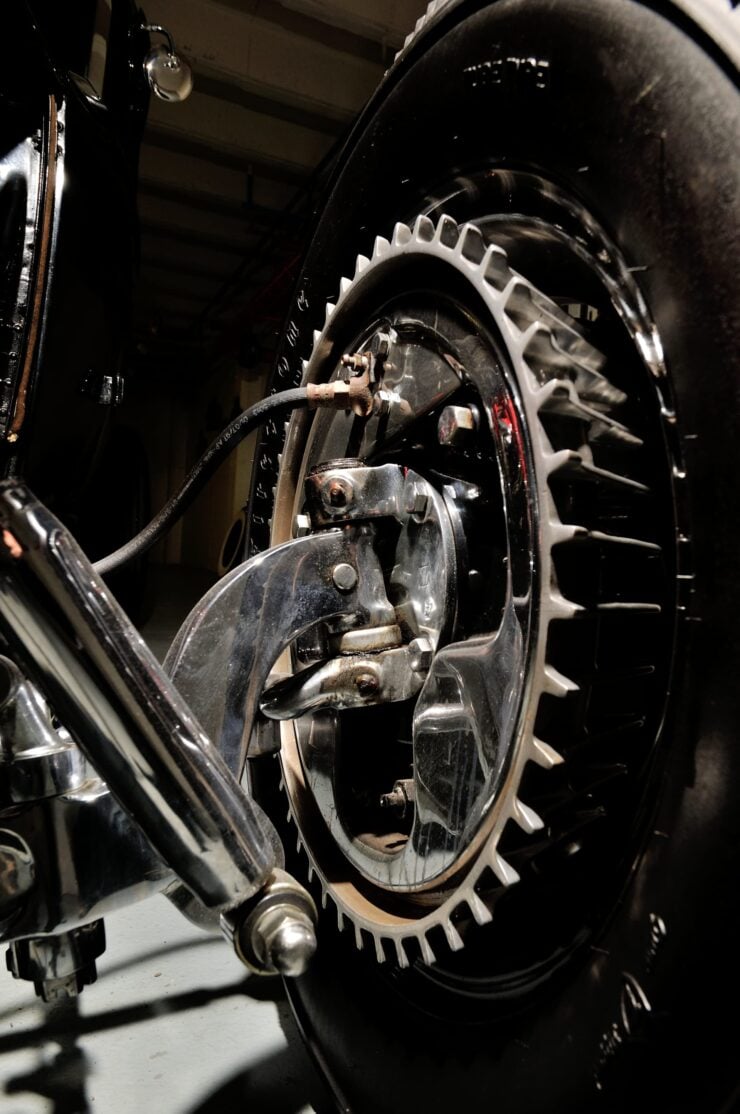
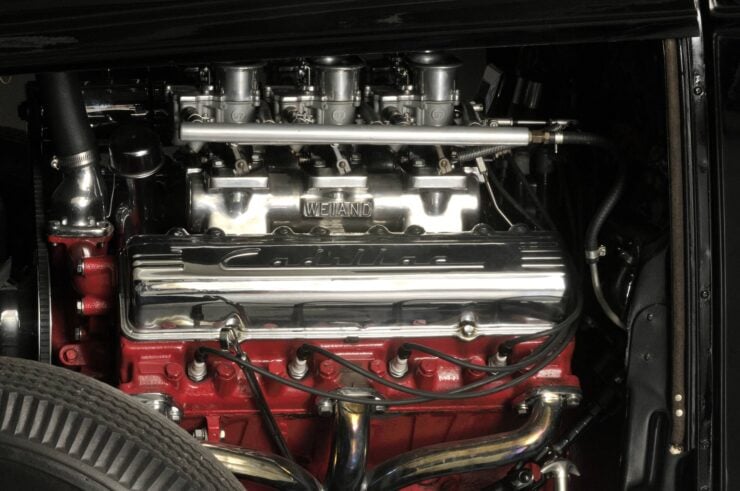
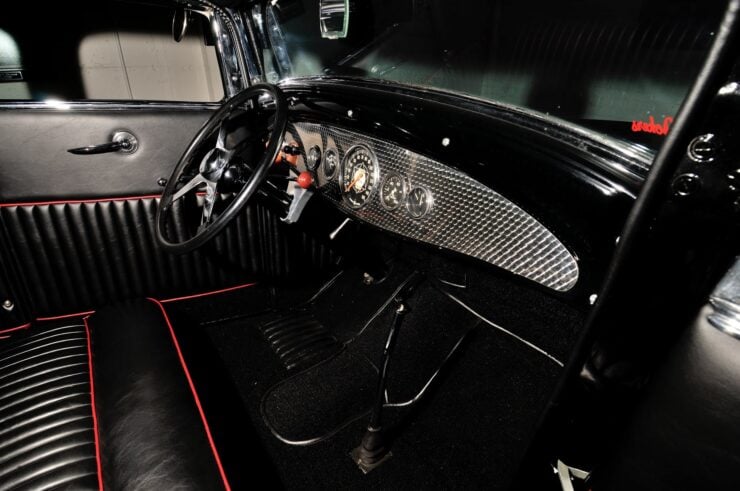
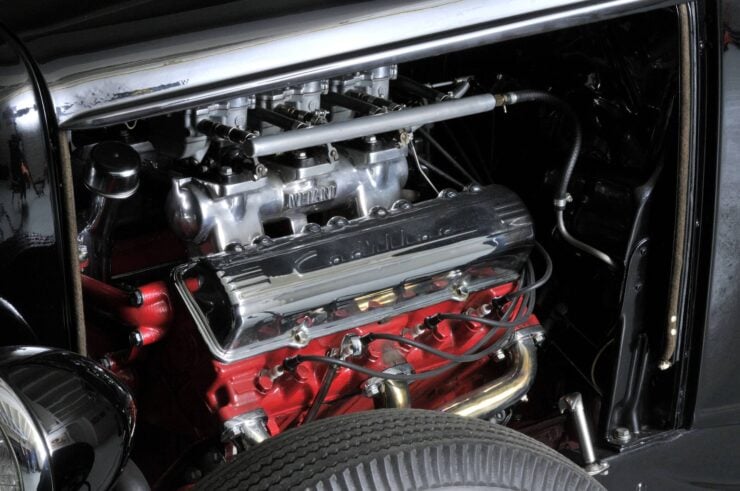
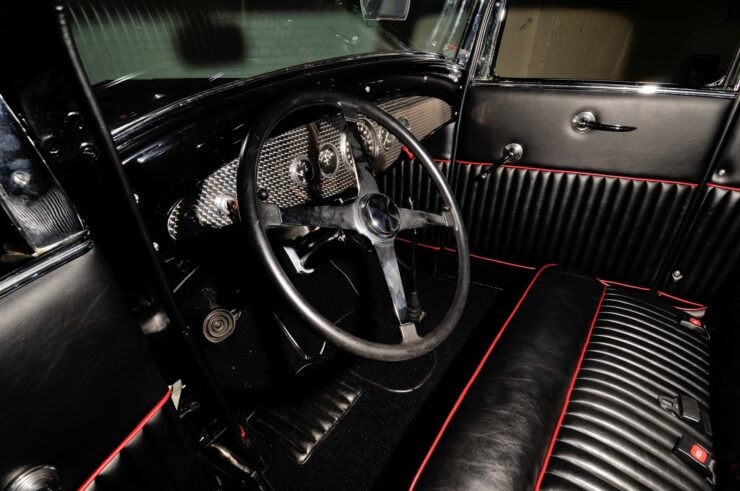
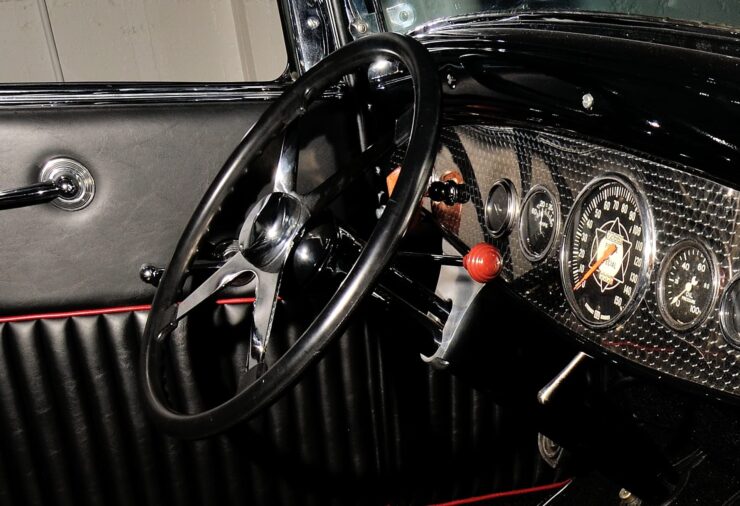
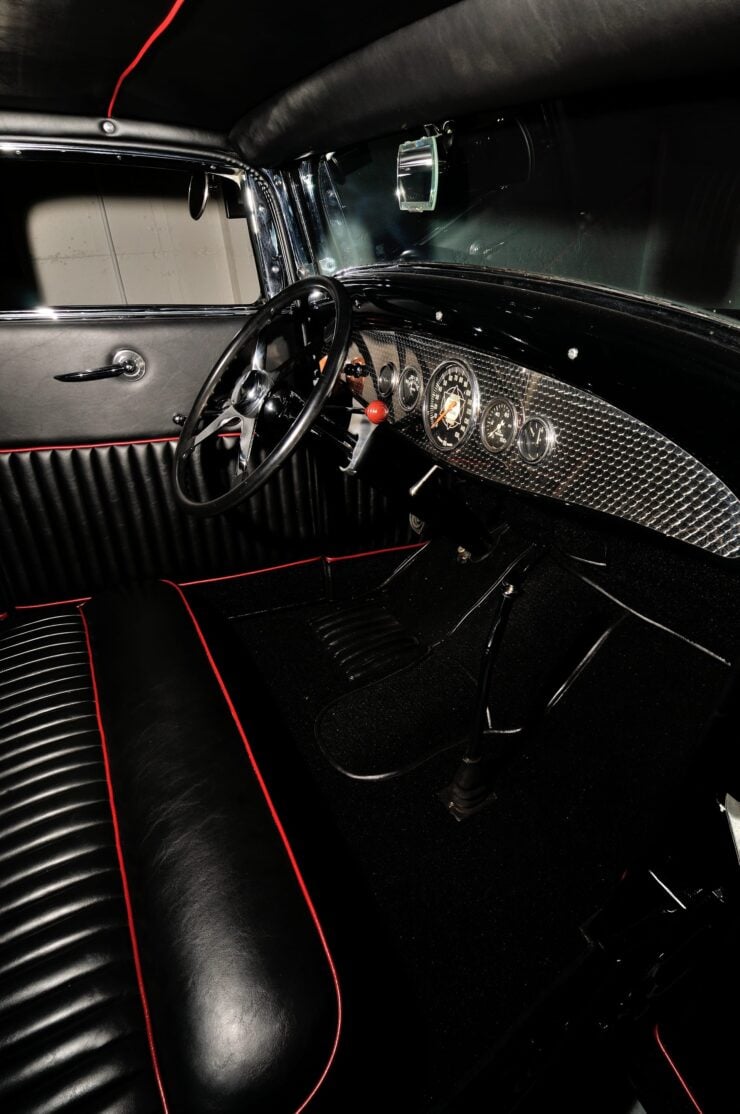
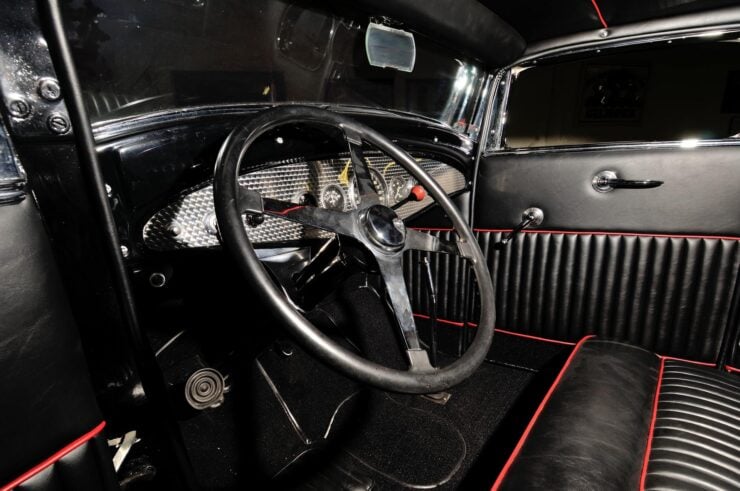
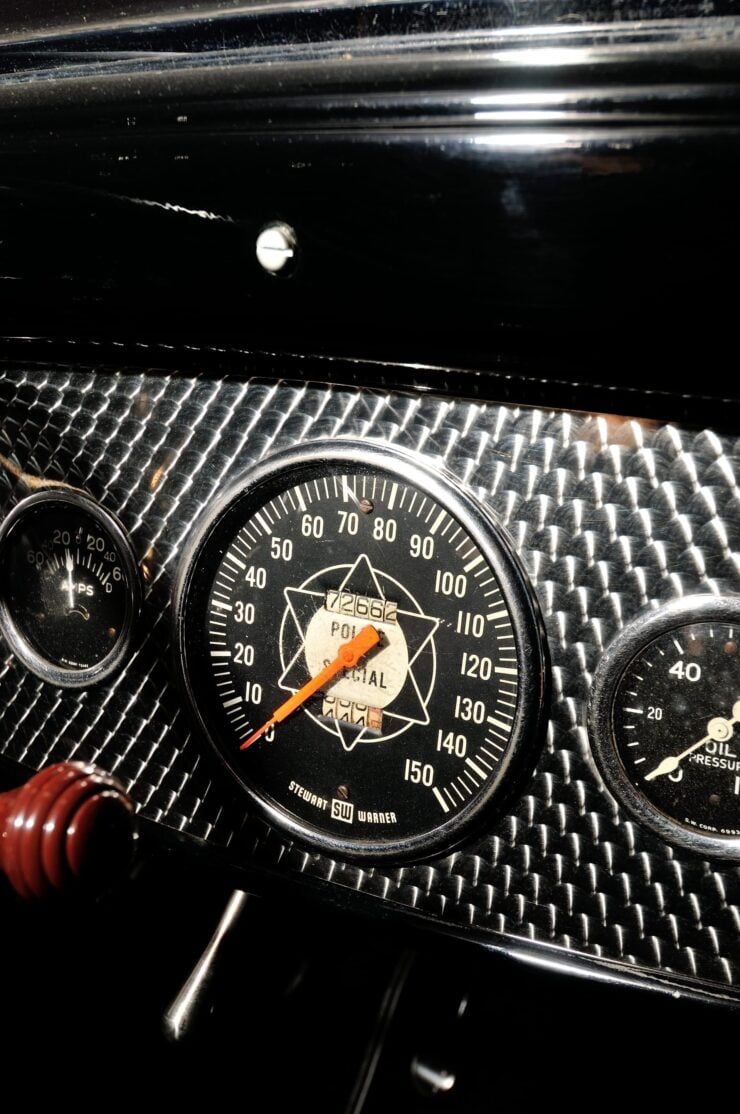
Images courtesy of Mecum

